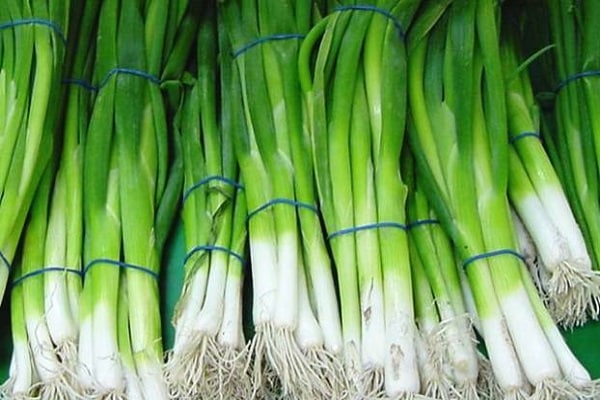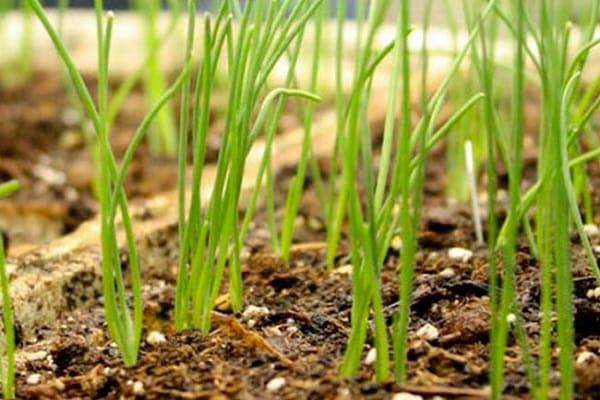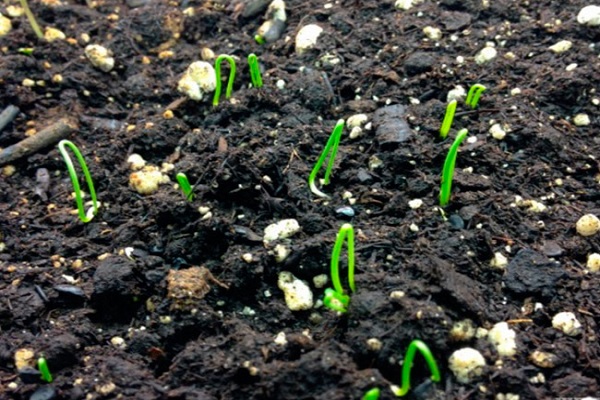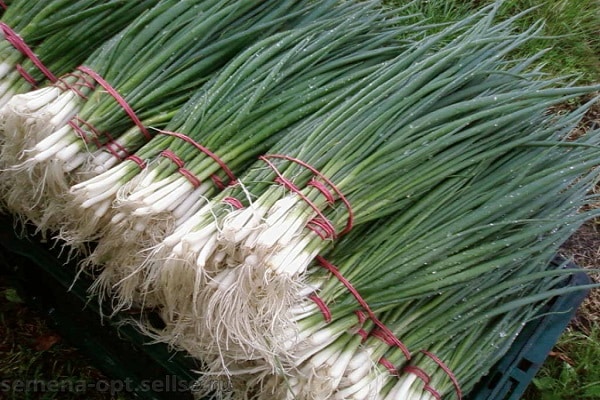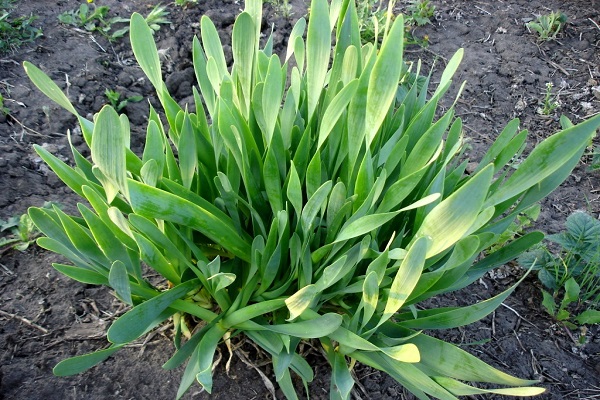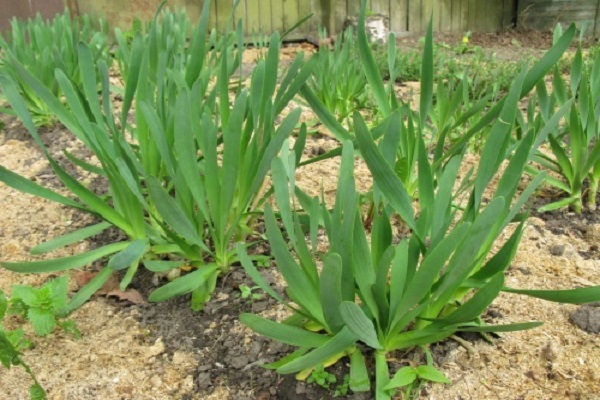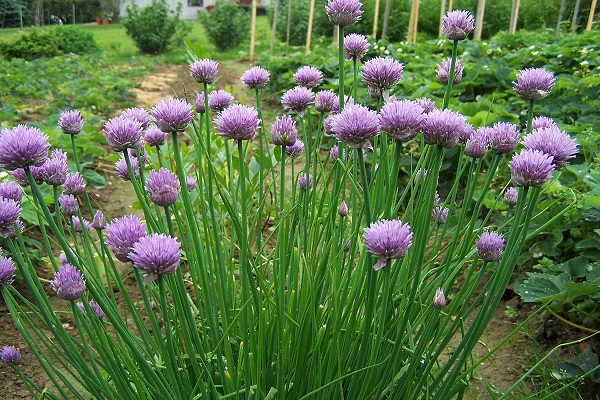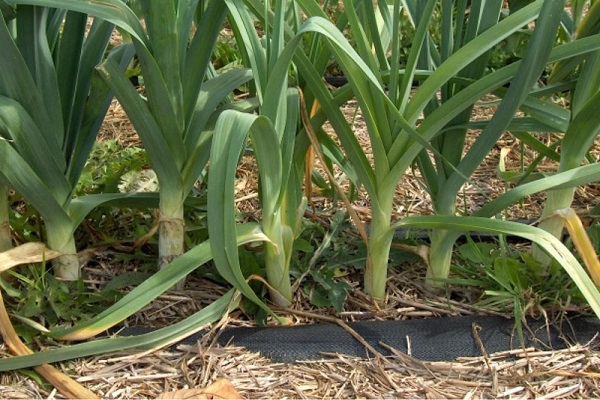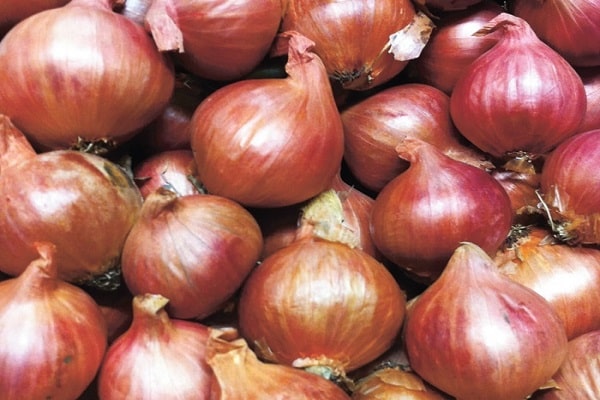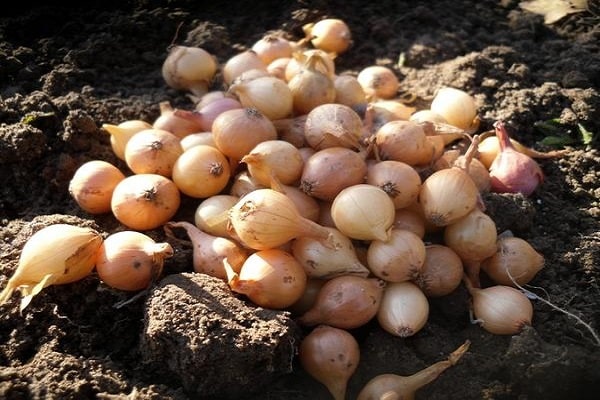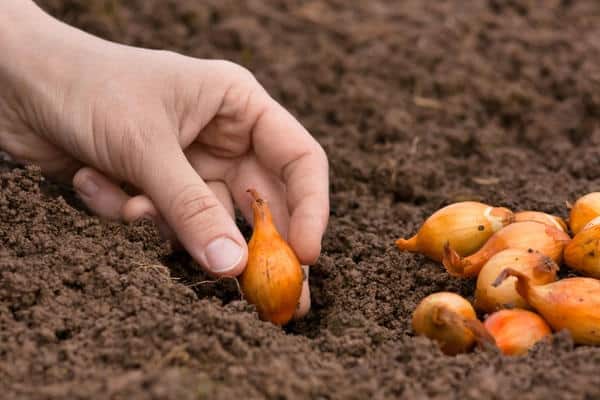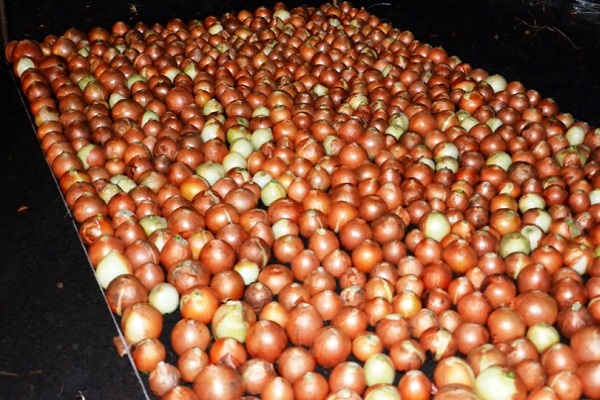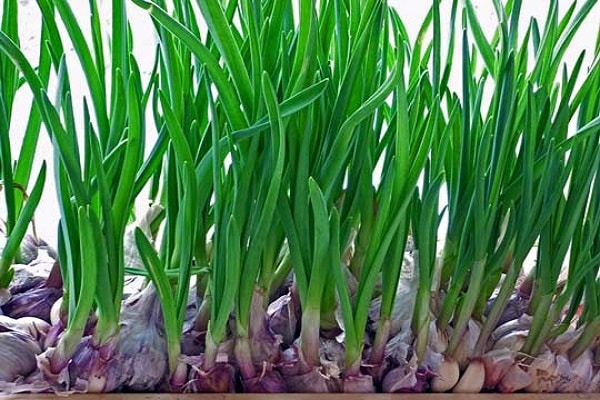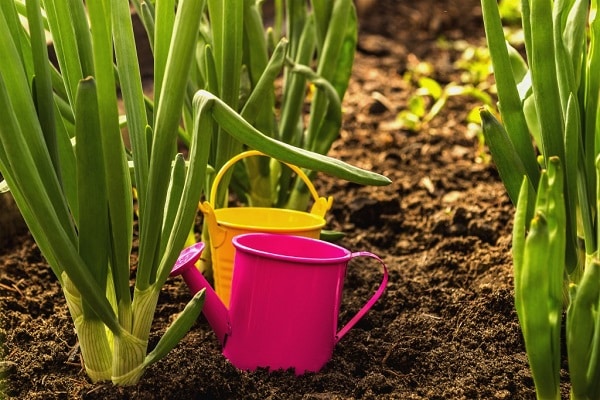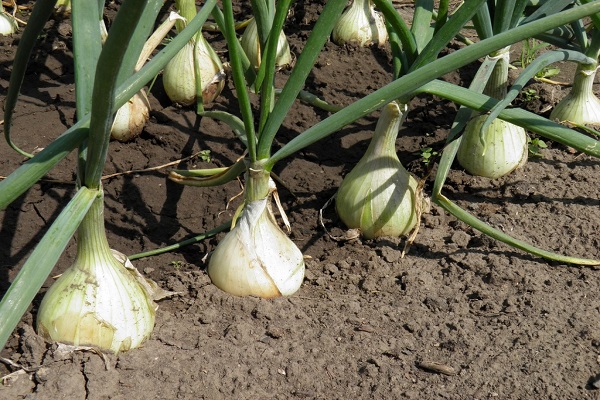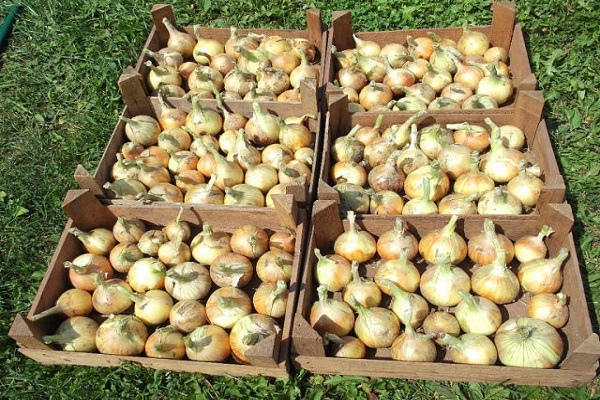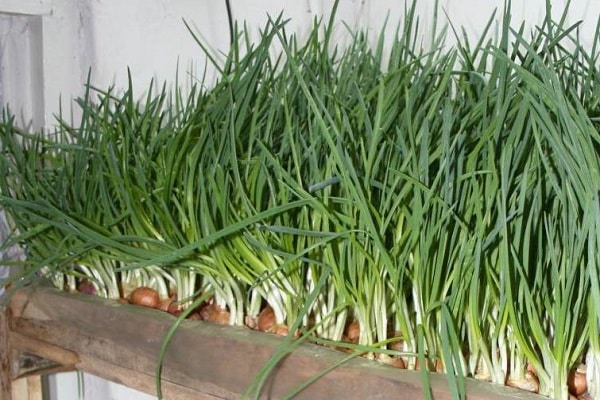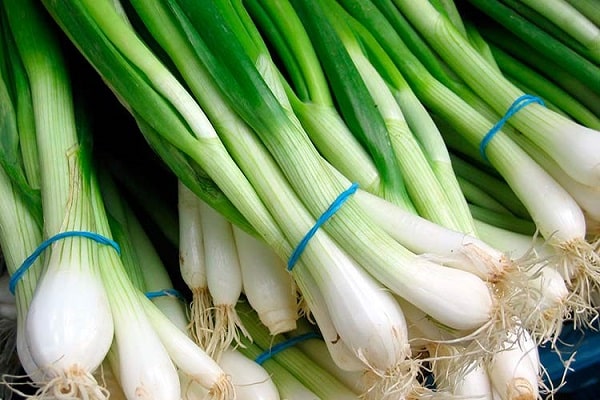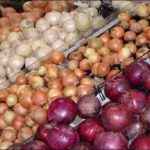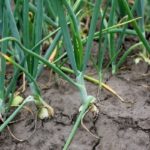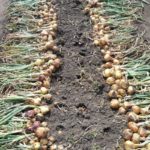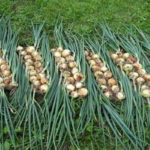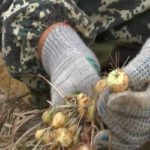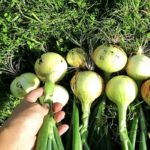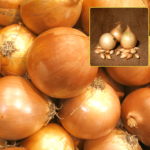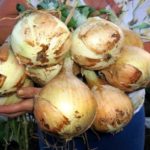Green onions are on sale all year round, but if you have a summer cottage, it is worth sowing some onion seeds on the greens. Feathers picked from your garden are much tastier and healthier than store-bought ones. Growing this vegetable crop is easy and requires little space.
Varieties for greens
During the season, you can sow onions in the ground several times, then there will be fresh feathers on the table throughout the spring-autumn season. If there is a heated greenhouse, then in winter there will be greens for cutting. The main thing is not to make a mistake with the choice of variety. To obtain a green feather, there are different types.Let's look at just some of its varieties with original names:
- Parade.
- Totem.
- Slime.
- Soon.
- Leek.
Parade
Onion Parade was bred in Holland and is intended for producing greens. The variety propagates only by seeds. The head is not formed. Instead, a stem and long leaves up to 60 cm grow quite quickly. The color of the feathers is dark green with a slight blue tint.
When growing onions Parade for feathers, summer residents get juicy greens with a pleasant taste. There is no sharp bitterness in the leaves; they retain their presentation for a long time and do not turn yellow. To ensure that greens come to the table regularly, the Parade variety is sown 3 to 4 times per season with an interval between plantings of 2 to 3 weeks.
The feathers are cut at intervals of 38 to 50 days, the productive period of the variety lasts 80 days. Characteristics of the Parade variety suitable for cutting:
- feather length from 50 to 70 cm;
- white stem thickness 10 mm;
- green stem diameter 15 mm.
If all the rules for planting and caring for the Dutch variety are followed, the yield of Parade is 8 kg/m².
Totem
Totem is an excellent Japanese mid-season onion variety grown for greens. It is grown as an annual crop by sowing seeds in open or closed ground. Sowing is recommended to be carried out from February to July in greenhouses, and in open ground they are sown in late autumn and early production is obtained in early summer.
The plant forms a powerful rosette consisting of long, erect leaves, the length of which can reach up to 55 cm. The feather is dark green with a slight waxy coating. By hilling the plantings, marketable stems with a long bleached stem are obtained.
The variety does not form bulbs and produces tender, juicy, non-coarse leaves.From one plant you can get up to 60 g of greens, from one square meter - up to 4 kg. The plant tolerates autumn weather well and does not lie down. The feather has an even color throughout the growing season. The taste of the greens is mild, like a turnip feather.
Slime
Slizun is a productive, frost-resistant variety of onion. There are varieties of different ripening periods. Slizun reproduces by seeds and vegetatively.
| Name | Ripening period | Productivity |
| broadleaf | early ripening | 2 kg/m² |
| A treasure trove of health | early ripening | 4 kg/m² |
| Leader | mid-season | 3.3 kg/m² |
| Green | mid-season | 6 kg/m² |
The largest amount of feathers is produced by the frost-resistant Siberian variety Green. This species can grow in one place for about 6 years; it has good immunity to rust and downy mildew. The plant is characterized by juicy, flat leaves (up to 2 cm wide), twisting in a spiral, with a pungent taste and a light garlic aroma.
Useful properties of Slime:
- strengthens blood vessels;
- lowers cholesterol;
- increases immunity;
- improves the functioning of the cardiovascular system.
Skoroda's Bow
Motherland Luka Skoroda — Germany, originally it was called Schnitt, which translated from German means a cutting plant. Summer residents grow this species in their gardens as an annual or biennial crop from seeds, and in gardens as a flowering, ornamental perennial.
Thin tubular leaves containing up to 3% sugars, a rich set of vitamins and phytoncides are used for food. The taste and aroma of the leaves resembles the taste of turnip feathers, but more delicate. The color of the feathers is bright green, maximum length 45 cm, width from 5 to 8 mm.
Skoroda has a powerful underground part: small oblong-shaped bulbs (up to 20 pieces per bush), brownish or violet-red, thread-like roots up to 50 cm long. From the second year, the plant throws out a peduncle from May to June. The colors of the flowers are varied: white, pale purple, lilac. Flowering ends in August.
Leek
Descriptions of leeks were found in ancient tomes; they were grown in ancient times. Despite the difficult climatic conditions of our country, varieties of this onion are grown everywhere as an annual crop. Seedlings - in regions with short summers, seeds in the ground - in the south.
The most popular are early ripening varieties that form useful feathers within 4 months:
- Gulliver.
- Vesta.
- Goliath.
In the first year after planting, the plant grows leaves and a white false stem. This is what they use for food. Only young greens are used.
Planting onions by month
Beginning in April, summer residents prepare beds for onions; for forcing the feathers, they use multi-primed varieties of onions:
- Cipoluccio.
- Aristocratic.
- Lilac ringing.
- Stuttgarten Risen.
You can determine which varieties have multiple buds by cutting the bulb; the best are considered to be those with 4–6 buds. In terms of productivity, Stuttgarten Riesen is a good variety; when planted on a bridge, up to 15 kg of high-quality greenery is obtained from 1 m². For sale, onions are grown in heated greenhouses throughout the year; in unheated buildings, onions are planted on greens from early spring to late autumn.
Winter landing
When propagating onions from seeds for greens, winter planting is practiced; it allows you to get the first harvest in the early stages.It is important to choose the right variety, the main characteristics that you should pay attention to:
- frost resistance;
- productivity;
- immunity.
Parade onions are suitable for growing according to all these parameters. Nigella (seeds) are checked before sowing - they are filled with cold water. Empty seeds float, whole ones sink to the bottom. The right time for sowing is days after the first frost on the soil.
The bed is prepared before the onset of cold weather:
- dig with a shovel on a bayonet;
- add humus and ash;
- Mineral fertilizers are applied to depleted soils according to the norm.
Planting nigella on greenery begins after the bed has been properly prepared, furrows 2 to 3 cm deep have been marked. The seeds are laid out in furrows in increments of 3–5 cm, sprinkled with humus or ordinary soil. For the winter, the bed is covered with mulch. In regions where there is little snow in winter, bags filled with sawdust are placed on the ridges.
Spring planting
All summer residents have been planting herbs in their dachas since mid-April. One of the common questions during this period is which onions to plant on greens. The fastest and easiest way to grow onions is to plant spring onions. Heads with a diameter of 2 to 4 cm are suitable for forcing greens.
To speed up feather growth, planting material is prepared for planting:
- warm up the seedlings for 2 days, the room temperature should be above 25 °C;
- cut off the top of the onion up to the shoulders;
- dissolve a tablespoon of ammonium nitrate in water heated to 35 °C (10 l) and soak the heads in it for 12 hours.
To save space, plant using the bridge method, placing the bulbs close to each other. Up to 13 kg of onion sets can be placed per square meter. If greens are needed for home consumption, then the tape method is suitable.The furrows are made at intervals of 10 cm, the distance between the heads is no more than 2 cm. The bulbs are sprinkled with a thin layer of earth and watered.
July landing
In July, the beds are cleared of early greens and radishes. You can sow on empty land perennial varieties of onions for greens. So, having planted in July onion, you will receive a full-fledged feather for cutting next spring.
You need to choose a sunny place for onion beds, where the snow melts faster in the spring. Add humus and ash to the soil. Sow densely in rows; after emergence, thin out the seedlings. Maintain an interval between shoots of 3.5–5 cm.
In summer the weather is hot, if it rains rarely, then you need to make sure that the soil does not dry out. By late autumn, a feather from 20 to 30 cm long will grow in the garden bed. To prevent young plants from freezing in winter, it is better to mulch the bed with peat or fallen leaves.
Planting onions in August
In August we will start planting onions to provide ourselves with greens in the autumn. To quickly obtain feathers, we will plant the bulbs in plastic containers. When the air temperature drops, they can be brought into a warm room or greenhouse.
Composition of soil mixture for planting:
- peat - 7 parts;
- humus - 2 parts;
- garden soil - 1 part.
Suitable varieties for producing green onions during August planting: Shakespeare, Red Baron, Radar, Bessonovsky, Strigunovsky.
Reviews about onions and their cultivation
On forums, summer residents share their experience of growing their favorite vegetables; you can find reviews about forcing onions to grow greens. Opinions about the Parade and Totem varieties are only positive.
Elvira, Anapa:
“We have green onions on our table from early spring until almost winter. I plant only one variety - Parade from the Plasma Seeds company, a friend recommended, she really likes it.In hot weather (35–40 °C) I water the bed once a week, the feathers do not turn yellow.”
Ilya, Orsk:
“I sowed the seeds of the Totem variety on the greens, and I was pleased with the feather harvest. The leaves are large, juicy, keep well when cut, and stay in the refrigerator all week without losing their flavor.”
Tina, Moscow region:
“From spring to autumn, green onions are on the table. It contains a lot of vitamin C, we add it to any dishes. The choice of variety grown was random. The salesman in the store advised me to buy the Totem variety. I am satisfied with the quality of the greens. I sow the seeds twice: for early consumption before winter and in early May for cutting greenery at the end of summer and autumn.”

